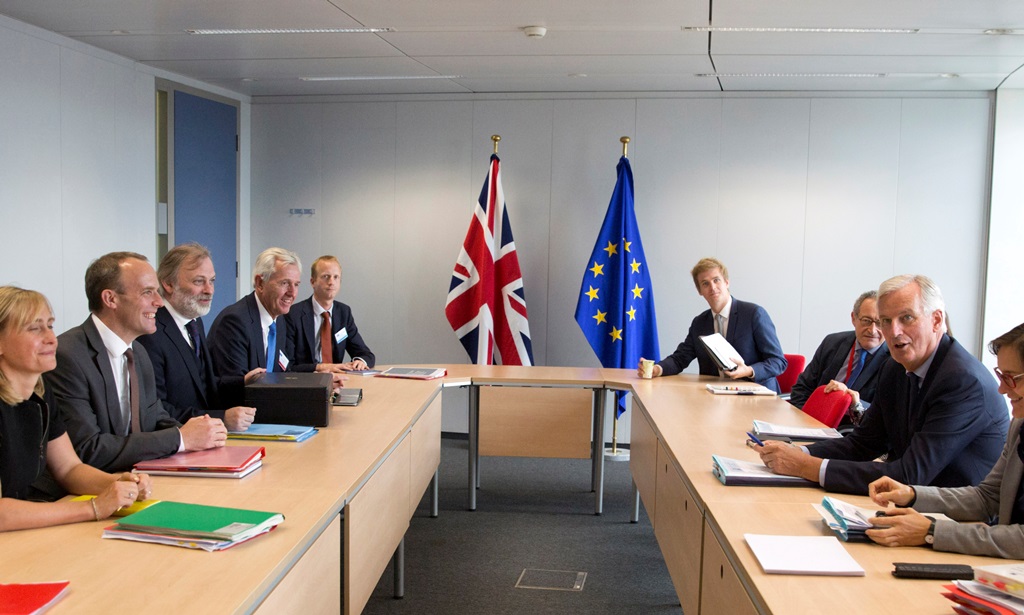The UK Policy Paper on UK-EU Future Relations: Impact on Brexit Negotiations

From the perspective of the last 18 months, the publication by the UK government of the paper seems to be a decisive attempt to reach agreement with the EU concerning the conditions of its withdrawal. The publication of the document is an invitation from the May government for the mutual revision of “red lines” that in practice could lead to the development of a “bespoke” model of UK-EU relations. It is a solution that avoids the “no-deal” scenario but one that requires concessions from both parties.
Contents of the Paper
The essence of the proposals described in the document is to maintain the freedom of movement of goods and the factual recognition by the UK of the EU legislation, judicature, and the relevant financial claims. However, the proposal assumes restricting the free flow of people in favour of a controlled flow of workforce. Regarding the free movement of services and capital, new solutions were proposed based on the principle of mutual recognition of professional qualifications and licences, but with limited access to the market. The UK argues that these solutions would eliminate the need to rebuild traditional border infrastructure on the island of Ireland. An integral part of the plan is also a package of agreements on security and defence cooperation.
Political Reactions in the UK
The government’s acceptance of the document resulted in resignations from Davis Davis, the Secretary of State for Exiting the EU, and Boris Johnson, the Foreign and Commonwealth Affairs secretary. After the ensuing reshuffle, there are no Tory Eurosceptic leaders left in May’s cabinet. A parliamentary campaign for the rejection of the paper is also gaining momentum. If May refuses to comply with the demands of the Tory Eurosceptics, a leadership challenge is probable. Moreover, in September and October, there will be national conferences of all major political parties, when the paper will be evaluated by rank-and-file members of both the Labour and Conservative parties. Noteworthy, support for exiting the EU among Tory and Labour members reaches 70% and 20%, respectively, which visibly contrasts the views of both parties’ MPs. Moreover, May’s position is further weakened by her Brexit programme attracting clear support from only 20-25% of the UK Parallel studies show that about 40% of voters believe the paper does not reflect the result of the referendum. The issue of progress in the Brexit may well be decisive for May’s continued premiership.
The document demonstrates the scope of the UK concessions possible within the current political framework. The volatile political balance has been demonstrated by the results of the general elections (2015, 2017), national/regional elections (2016, 2017) and local elections (2018). If May lost her position before the Brexit date, the most likely alternative to her is a Tory “hard Brexiteer” (e.g., Johnson) or the leader of the official opposition, Jeremy Corbyn. The latter, however, remains personally a true Eurosceptic. Another problem is internal Labour Party disputes. Although most of the party’s MPs and 60% of its voters are reluctant to leave the EU, a Labour victory is impossible without activating the 30% of its traditional voters who support Brexit.
EU Dilemmas
The EUCO probably will address the paper during the summit in Salzburg on 20 September. The Union’s key objectives are the protection of the four freedoms, an image of success in the negotiations, and the maintenance of unity of its members. However, the way in which these plans are implemented requires an assessment of the risk the EU is ready to cope with.
In seems that in the EU the dominant assessment is that the May government have in practice excluded the “no-deal” scenario. Consequently, from the EU perspective, tenacity seems an optimal negotiation strategy. This calculation seems to be accurate in the context of the UK’s current political setup. However, it can easily result in a negative outcome if there is a change of prime minister or snap elections in the UK. The vast majority of analyses indicate that a “no-deal” Brexit—no matter whether planned or accidental—would be the costliest solution for both parties.
Due to the European Commission’s warnings about the growing probability of a “no-deal” exit because of the delays on the UK side, the discussion about this scenario in the EU-27 has intensified. As a result, the awareness of the consequences of “no-deal” is growing. The debate highlights the differences in the economic and political interests between EU-27 members. The EU-27’s natural unanimity on Brexit’s direct costs to be paid by the UK (e.g., the “divorce bill”) made it possible to conclude an EU-UK political agreement in December last year. However, for the EU, the real test of unity on Brexit is still ahead. The test will be passed only when the EU demonstrates the ability to revise its negotiation strategy or to pay jointly the costs of a possible “no-deal” exit (e.g., aid for countries affected by the “cliff-edge” scenario).
If the paper was accepted by the EU as a starting point for intensified talks, the Union would strengthen May’s government as a partner committed to reaching an agreement. The UK’s close relationship with the single market and its regulatory system, as well as protection of the peace process in Northern Ireland, would be secured. Importantly, the possibility of UK customs or (de)regulatory competition with the EU would be limited. The Union would protect its trade surplus and cross-border production chains (e.g., the automobile industry). The treaty nature of the agreement would impede its unilateral revision in the future. Finally, the UK would most likely support the EU’s stance on current U.S. international trade policy or the Middle East. However, the main cost to the EU in that scenario would be to weaken the coherence of the four freedoms and to strengthen the trend of “differentiated integration”.
In turn, rejection of the paper would strengthen probability of a radical change in the UK political scene. The EU’s political risk in this scenario is the possibility of the negotiations resetting as a consequence of a hard Brexit, which would provoke economic shock both on the UK and EU sides. As regards the EU-27, this scenario would create internal tensions resulting from the differences in the scale of losses and other problems for individual Member States. The UK after Brexit could also enter into customs and (de)regulatory competition with the EU and strengthen its relations with the U.S. at the EU’s expense. In this case, maintaining EU exports of food, clothing, or furniture to the UK would be a challenge because of the EU’s non-competitive prices in comparison to the global market. Should the paper be rejected as a starting point for new talks, the most important opportunities for the EU are connected with making the UK side accept an off-the-shelf model of relations, probably the Norway one. In addition, the EU would spectacularly defend its model of the single market.
Conclusions and Recommendations
The EU is faced with a choice of whether the aim of the negotiations is to increase the likelihood of agreement or to maximise the protection of the single market. The first option requires a change in the EU’s negotiations mandate and possibly the extension of the negotiation period while the second requires acceleration of “no-deal” preparations. The first reactions on the EU side after the paper was released indicate the second option.
The nature of the EU dilemma does not change with proposals for a second Brexit referendum, voiced by some politicians and activists in the UK. First, it would be very difficult to predict its outcome, and second, due to procedural constraints, it could only take place in the spring of 2019.
Poland is exposed to political and economic costs both in the case of a “soft Brexit” (e.g., coherence of the single market) and a “hard Brexit” (e.g., loss of financial benefits and access to UK market). In an analysis of Poland’s interests, however, it is worth considering the wider context. For example, in the case of a Corbyn premiership, it is likely the UK would limit its activities in NATO for political and financial reasons. It is also important for Poland to start preparations for a “no-deal” scenario, with a related information campaign directed to Polish citizens and businesses associated with the UK.



